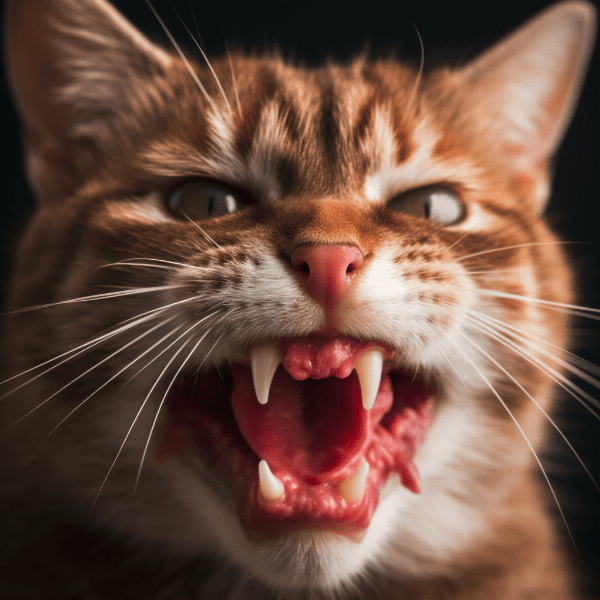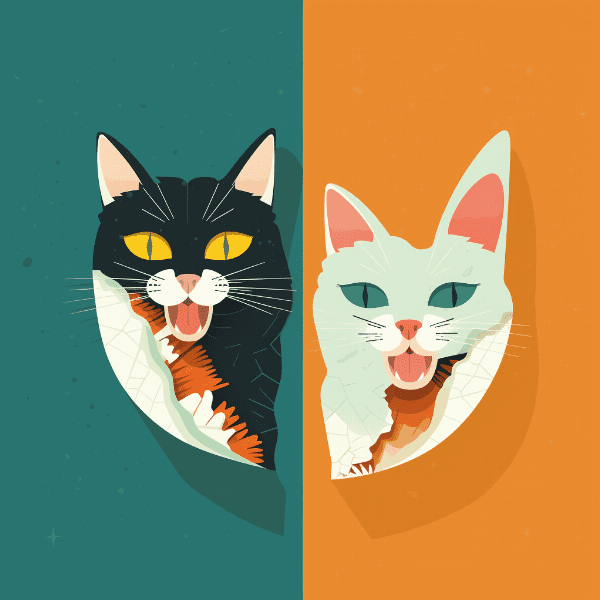Table of Contents
- Understanding Tooth Resorption in Cats
- Signs and Symptoms of Tooth Resorption in Cats
- Causes of Tooth Resorption in Cats
- Diagnosing Tooth Resorption in Cats
- Treatment Options for Tooth Resorption in Cats
- Preventing Tooth Resorption in Cats
- Managing Pain and Discomfort in Cats with Tooth Resorption
- The Importance of Dental Care for Cats
- When to Consult a Veterinarian for Tooth Resorption
- Living with a Cat with Tooth Resorption: Tips and Tricks.
Understanding Tooth Resorption in Cats
Tooth resorption is a common dental condition that affects cats of all ages, breeds, and genders. Also known as feline odontoclastic resorptive lesions (FORL), this condition occurs when the tooth structure is broken down and resorbed by the body. In this section, we will delve deeper into the causes and effects of tooth resorption in cats.
The Process of Tooth Resorption
Tooth resorption starts when specialized cells in the body, called odontoclasts, begin to break down the tooth structure. These cells work by dissolving the mineralized tissues of the tooth, including the enamel, dentin, and cementum. Over time, the tooth structure is weakened, and the tooth may eventually become loose or fall out.
Different Types of Tooth Resorption
There are two main types of tooth resorption in cats: external and internal. External resorption occurs when the cells that line the tooth root start to dissolve the root structure. Internal resorption, on the other hand, occurs within the tooth itself, usually starting in the pulp cavity.
Prevalence of Tooth Resorption in Cats
Tooth resorption is a common dental problem in cats, with studies showing that up to 70% of cats over the age of five are affected. However, tooth resorption can affect cats of any age, and some cats may even develop the condition as young as one year old.
Symptoms of Tooth Resorption
The early stages of tooth resorption may not show any visible symptoms, making it difficult to diagnose. However, as the condition progresses, cats may start to exhibit signs of pain or discomfort. Some common symptoms of tooth resorption in cats include excessive drooling, reluctance to eat or drink, pawing at the mouth, and a change in chewing habits.
Risk Factors for Tooth Resorption
While tooth resorption can affect any cat, certain factors may increase a cat’s risk of developing the condition. These factors include age, breed, genetics, and diet. Cats that consume a diet high in carbohydrates or low in calcium may be at higher risk of developing tooth resorption.
In summary, tooth resorption is a common dental condition in cats that can affect cats of all ages, breeds, and genders. Understanding the causes, symptoms, and risk factors of tooth resorption can help pet owners identify the condition early and seek prompt treatment from a veterinarian.
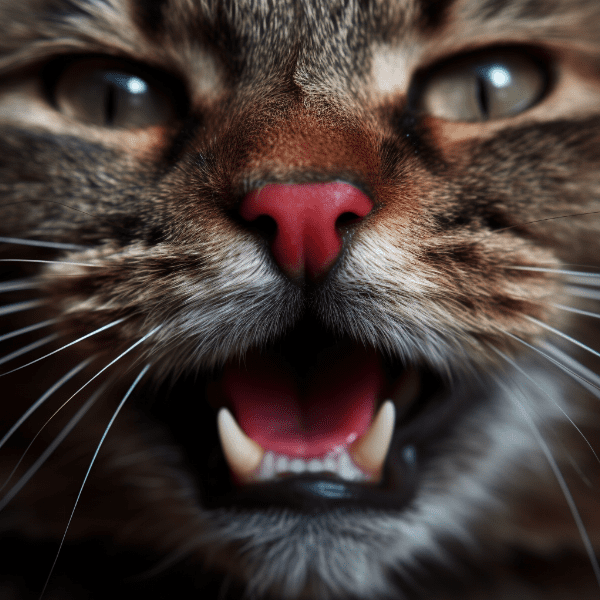
Signs and Symptoms of Tooth Resorption in Cats
Tooth resorption in cats can be a painful and uncomfortable condition. Unfortunately, cats are masters at hiding their pain and discomfort, making it challenging for pet owners to recognize the signs of tooth resorption. In this section, we will discuss the most common signs and symptoms of tooth resorption in cats.
Excessive Drooling
Cats with tooth resorption may produce more saliva than usual, leading to excessive drooling. This excessive drooling may also cause the fur around the mouth to become wet and matted.
Reluctance to Eat or Drink
Cats with tooth resorption may experience pain or discomfort when eating or drinking, leading to a reluctance to consume food or water. They may also take longer to finish their meals, or they may refuse to eat altogether.
Pawing at the Mouth
Cats with tooth resorption may paw at their mouth or rub their face against objects in an attempt to alleviate the pain or discomfort.
Change in Chewing Habits
Cats with tooth resorption may change their chewing habits, favoring one side of their mouth over the other. They may also chew more slowly or avoid hard foods altogether.
Vocalization
Cats with tooth resorption may vocalize more than usual, indicating that they are in pain or discomfort.
Bad Breath
Cats with tooth resorption may develop bad breath, also known as halitosis. This is because the resorption process can cause bacteria to build up in the mouth, leading to an unpleasant odor.
Bleeding or Swollen Gums
Cats with tooth resorption may experience bleeding or swollen gums around the affected tooth or teeth. This is due to the inflammation and irritation caused by the resorption process.
It is essential for pet owners to recognize these signs and symptoms of tooth resorption in cats and seek veterinary care promptly. If left untreated, tooth resorption can cause significant pain and discomfort for cats and even lead to the loss of teeth.

Causes of Tooth Resorption in Cats
The causes of tooth resorption in cats are not yet fully understood, but several factors may contribute to the development of the condition. In this section, we will discuss the most common causes of tooth resorption in cats.
Genetics
Studies have shown that genetics may play a role in the development of tooth resorption in cats. Some breeds, such as Siamese and Persians, may be more predisposed to developing the condition than others.
Diet
A diet high in carbohydrates or low in calcium may increase a cat’s risk of developing tooth resorption. This is because these diets may cause an imbalance in the body’s calcium and phosphorus levels, which can lead to the breakdown of tooth structure.
Trauma
Trauma to the mouth or teeth may cause tooth resorption in cats. This can include injuries from falls, fights, or accidents.
Tooth Overcrowding
Tooth overcrowding occurs when there is not enough space in the mouth for all of the teeth. This can lead to pressure on the teeth and gums, causing them to break down and resorb.
Feline Immunodeficiency Virus (FIV)
Feline immunodeficiency virus (FIV) may increase a cat’s risk of developing tooth resorption. This is because the virus weakens the cat’s immune system, making them more susceptible to dental problems.
Age
As cats age, they may be more prone to developing tooth resorption. Studies have shown that cats over the age of five are more likely to develop the condition than younger cats.
While the exact causes of tooth resorption in cats are still not fully understood, understanding the risk factors can help pet owners take preventative measures to keep their cats’ teeth healthy. It is important for pet owners to schedule regular dental checkups with their veterinarian and to maintain a healthy diet and dental hygiene routine for their cats.
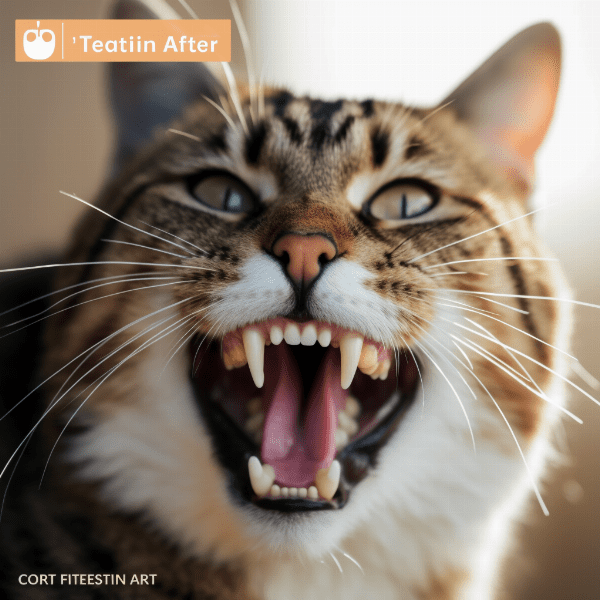
Diagnosing Tooth Resorption in Cats
Diagnosing tooth resorption in cats can be a challenge, as the condition is often not visible to the naked eye. In this section, we will discuss the diagnostic tools and procedures used by veterinarians to identify tooth resorption in cats.
Physical Examination
During a physical examination, the veterinarian will inspect the cat’s mouth and teeth for any signs of tooth resorption. They may also feel for any lumps or abnormalities in the mouth.
Dental X-rays
Dental x-rays are an essential tool for diagnosing tooth resorption in cats. X-rays can reveal any changes in the tooth structure, such as cavities, fractures, or resorption.
Sedation or Anesthesia
In some cases, the veterinarian may need to sedate or anesthetize the cat to perform a more thorough dental examination or x-rays.
Oral Biopsy
If the veterinarian suspects that the tooth resorption may be due to a more severe condition, such as cancer, they may perform an oral biopsy. During an oral biopsy, the veterinarian will take a small sample of the affected tissue and send it to a lab for analysis.
Blood Tests
Blood tests may be performed to rule out any underlying medical conditions that may be contributing to the development of tooth resorption.
It is important for pet owners to schedule regular dental checkups with their veterinarian, as early detection of tooth resorption can help prevent the condition from progressing and causing more significant health issues.
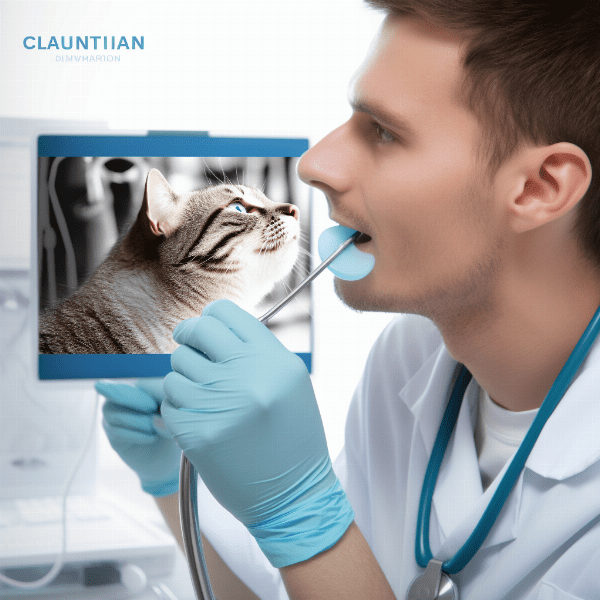
Treatment Options for Tooth Resorption in Cats
The treatment options for tooth resorption in cats depend on the severity and progression of the condition. In this section, we will discuss the most common treatment options for tooth resorption in cats.
Extraction
Extraction is the most common treatment for tooth resorption in cats. The affected tooth is removed under general anesthesia to prevent further pain and discomfort.
Root Canal Therapy
In some cases, a root canal may be an option to save the affected tooth. During a root canal, the veterinarian will remove the pulp and nerve tissue from the affected tooth, leaving the outer structure intact.
Antibiotics
If the tooth resorption has progressed to an infection, antibiotics may be prescribed to treat the infection and prevent it from spreading.
Nutritional Support
A healthy diet and proper nutrition can help support the cat’s overall health and immune system, which can aid in the healing process.
Regular Dental Care
Regular dental care, including professional cleanings and routine checkups, can help prevent the development and progression of tooth resorption in cats.

Preventing Tooth Resorption in Cats
While tooth resorption in cats cannot always be prevented, there are several steps pet owners can take to help reduce the risk of the condition developing. In this section, we will discuss the most effective ways to prevent tooth resorption in cats.
Healthy Diet
A healthy diet that is high in protein and low in carbohydrates can help prevent tooth resorption in cats. Pet owners should also avoid feeding their cats a diet that is high in processed foods or grains, which can contribute to the development of tooth decay and gum disease.
Routine Dental Checkups
Routine dental checkups with a veterinarian can help detect any early signs of tooth resorption or other dental problems. It is recommended that cats have a dental checkup at least once a year.
Chew Toys
Chew toys can help promote healthy chewing behavior in cats, which can help keep their teeth strong and healthy. Pet owners should choose chew toys that are appropriate for their cat’s age and size and made of durable materials.
Regular Exercise
Regular exercise can help promote overall health in cats, including their dental health. Exercise can help stimulate saliva production, which can help neutralize acid in the mouth and prevent tooth decay.
Avoid Trauma
Pet owners should take steps to prevent trauma to their cat’s teeth, such as keeping them away from objects that they could potentially chew on or jump from. Additionally, pet owners should monitor their cats for any signs of injury or trauma to the mouth or teeth.
By following these preventative measures, pet owners can help reduce the risk of tooth resorption in their cats and promote overall dental health.
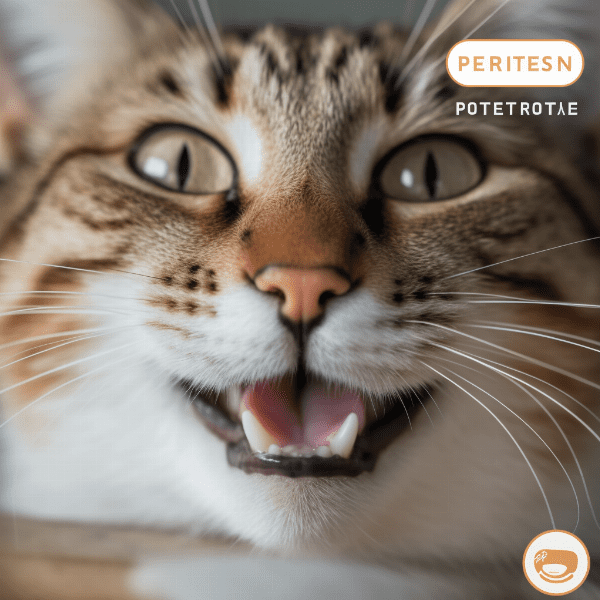
Managing Pain and Discomfort in Cats with Tooth Resorption
Cats with tooth resorption can experience significant pain and discomfort, which can impact their overall quality of life. In this section, we will discuss the most effective ways to manage pain and discomfort in cats with tooth resorption.
Pain Medication
Pain medication can help alleviate the discomfort associated with tooth resorption in cats. Pet owners should consult with their veterinarian to determine the appropriate medication and dosage for their cat.
Anti-Inflammatory Drugs
Anti-inflammatory drugs can help reduce inflammation and swelling associated with tooth resorption in cats. These drugs can also help alleviate pain and discomfort.
Dental Surgery
In severe cases, dental surgery may be necessary to remove the affected tooth and alleviate pain and discomfort. The veterinarian will perform the surgery under general anesthesia and may prescribe pain medication to manage discomfort during the recovery period.
Alternative Therapies
Alternative therapies, such as acupuncture or chiropractic care, may be beneficial in managing pain and discomfort in cats with tooth resorption. Pet owners should consult with their veterinarian to determine if these therapies are appropriate for their cat.
Managing pain and discomfort in cats with tooth resorption is essential to maintain their overall quality of life. Pet owners should work closely with their veterinarian to determine the best course of treatment and pain management plan for their cat.
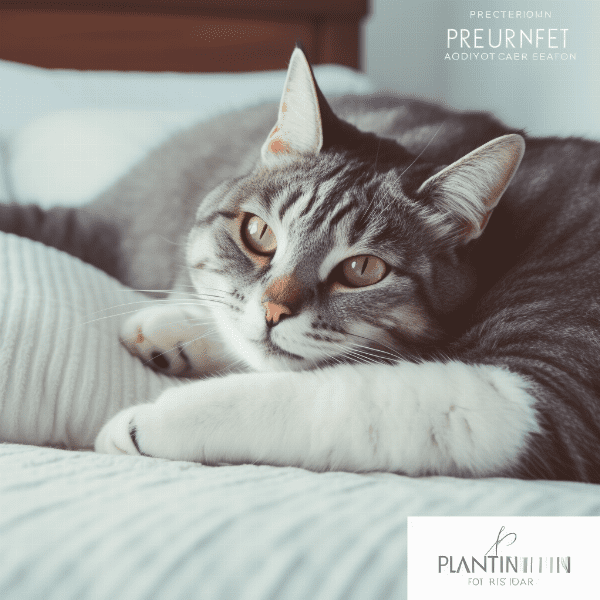
The Importance of Dental Care for Cats
Dental care is an essential part of a cat’s overall health and wellbeing. Regular dental care can help prevent the development and progression of dental problems, including tooth resorption. In this section, we will discuss the importance of dental care for cats.
Preventing Dental Problems
Regular dental care, including professional cleanings and routine checkups, can help prevent the development and progression of dental problems in cats. Catching dental problems early can help prevent pain, discomfort, and more severe health issues from developing.
Maintaining Good Health
Poor dental health can have a significant impact on a cat’s overall health and wellbeing. Dental problems can lead to infections, which can spread to other parts of the body and cause more significant health issues. By maintaining good dental health, pet owners can help ensure that their cats are healthy and happy.
Promoting Good Eating Habits
Dental problems, including tooth resorption, can make eating uncomfortable or even painful for cats. By maintaining good dental health, pet owners can help promote good eating habits and ensure that their cats are receiving the necessary nutrition to maintain good health.
Reducing Veterinary Costs
Preventing dental problems in cats can help reduce the need for expensive veterinary treatments in the future. By investing in regular dental care for their cats, pet owners can help prevent the need for costly dental procedures or emergency veterinary visits.
Promoting Quality of Life
Good dental health is essential for a cat’s overall quality of life. Dental problems can cause pain, discomfort, and other health issues that can impact a cat’s behavior and wellbeing. By maintaining good dental health, pet owners can help ensure that their cats are happy, healthy, and comfortable.
In conclusion, dental care is an essential part of a cat’s overall health and wellbeing. Regular dental care can help prevent dental problems, maintain good health, promote good eating habits, reduce veterinary costs, and promote a high quality of life for cats. Pet owners should work closely with their veterinarian to develop a dental care plan that is appropriate for their cat’s needs.

When to Consult a Veterinarian for Tooth Resorption
Tooth resorption in cats can be a painful and uncomfortable condition, and it is essential for pet owners to seek veterinary care promptly if they suspect that their cat may be experiencing dental problems. In this section, we will discuss when to consult a veterinarian for tooth resorption in cats.
Signs of Dental Problems
Pet owners should monitor their cats for any signs of dental problems, including excessive drooling, reluctance to eat or drink, pawing at the mouth, change in chewing habits, vocalization, bad breath, or bleeding or swollen gums. If any of these signs are present, pet owners should consult with their veterinarian promptly.
Trauma to the Mouth or Teeth
If a pet owner suspects that their cat has experienced trauma to the mouth or teeth, they should consult with their veterinarian promptly. Trauma can lead to tooth resorption, and prompt treatment can help prevent the condition from progressing.
Age
As cats age, they may be more prone to developing tooth resorption. Pet owners should monitor their senior cats for any signs of dental problems and consult with their veterinarian promptly if any issues arise.
It is essential for pet owners to seek veterinary care promptly if they suspect that their cat may be experiencing dental problems or tooth resorption. Early detection and prompt treatment can help alleviate pain and discomfort for cats and prevent further complications.

Living with a Cat with Tooth Resorption: Tips and Tricks.
Living with a cat with tooth resorption can be challenging, but there are several tips and tricks that pet owners can use to make their cat’s life more comfortable. In this section, we will discuss some tips and tricks for living with a cat with tooth resorption.
Ensure Plenty of Water
Cats with tooth resorption may be reluctant to drink water due to pain or discomfort. It is essential to ensure that your cat has plenty of fresh water available at all times to promote good hydration.
Provide a Comfortable Resting Place
Cats with tooth resorption may experience discomfort while sleeping or resting. Providing a comfortable resting place, such as a soft bed or blanket, can help alleviate discomfort and promote better sleep.
Regular Dental Checkups
Regular dental checkups with a veterinarian are essential for cats with tooth resorption. Routine checkups can help detect any changes in the condition and ensure that the cat’s dental health is being adequately monitored.
Pain Management
Cats with tooth resorption may experience significant pain and discomfort. It is essential to work with your veterinarian to develop a pain management plan that is appropriate for your cat’s needs.
Promote Good Dental Hygiene
Promoting good dental hygiene is essential in managing tooth resorption in cats. Pet owners should brush their cat’s teeth regularly, ideally every day, with a soft-bristled toothbrush and pet-friendly toothpaste.
Living with a cat with tooth resorption can be challenging, but with the right care and management, pet owners can help ensure that their cat is comfortable and happy. It is essential to work closely with your veterinarian to develop a management plan that is appropriate for your cat’s needs.



